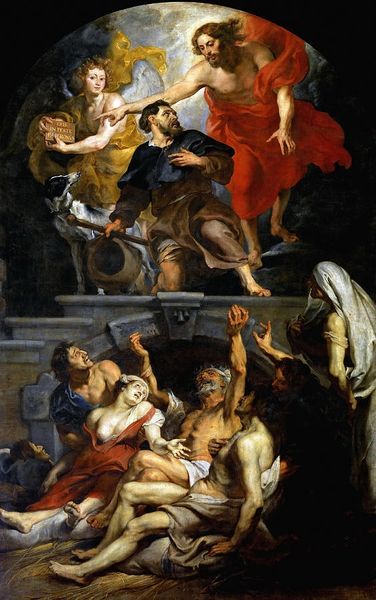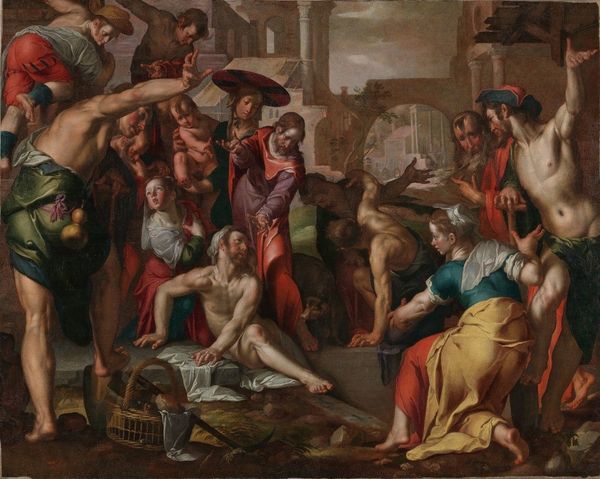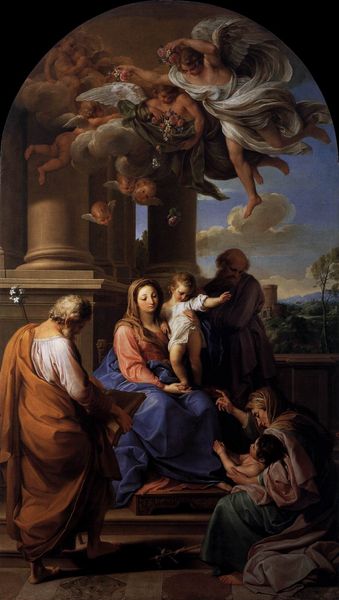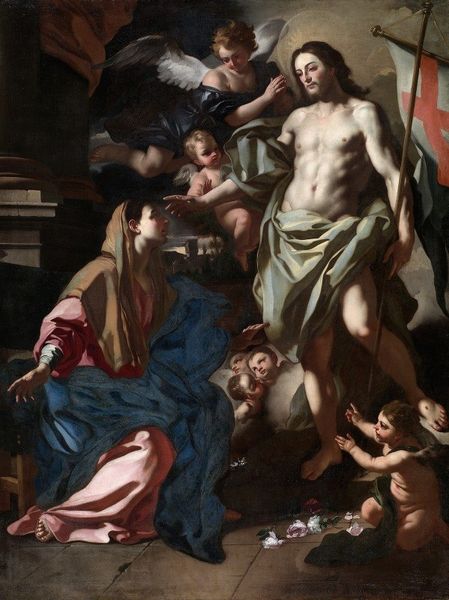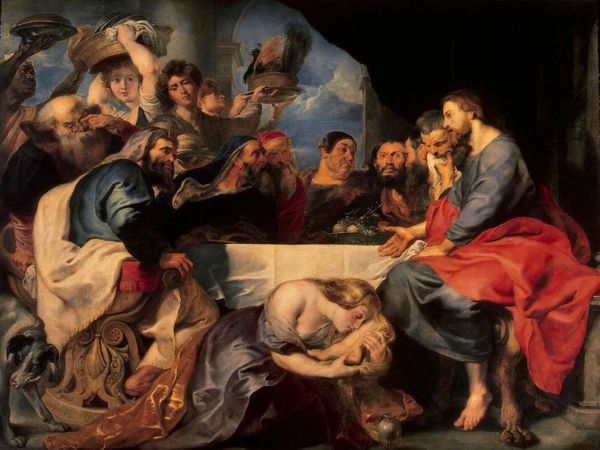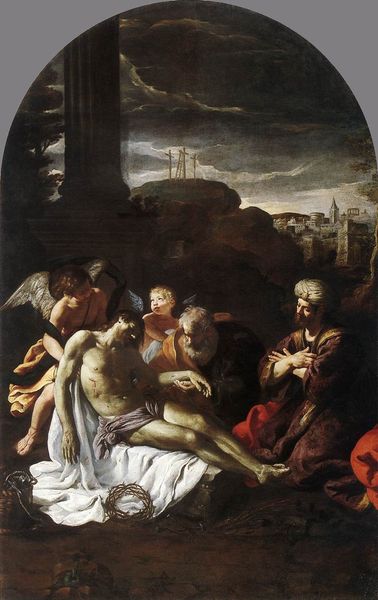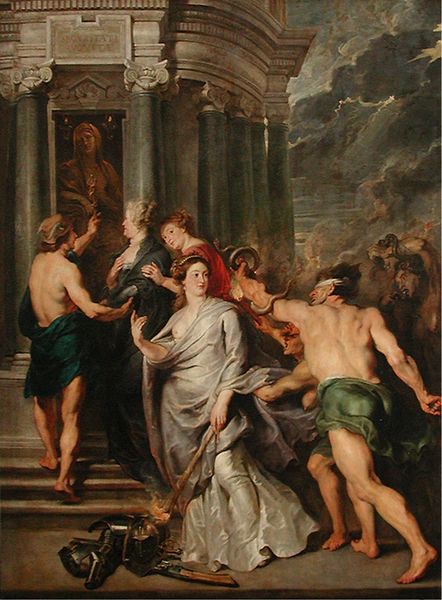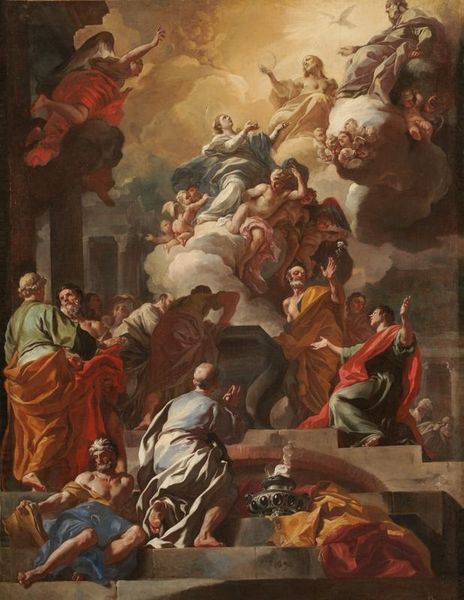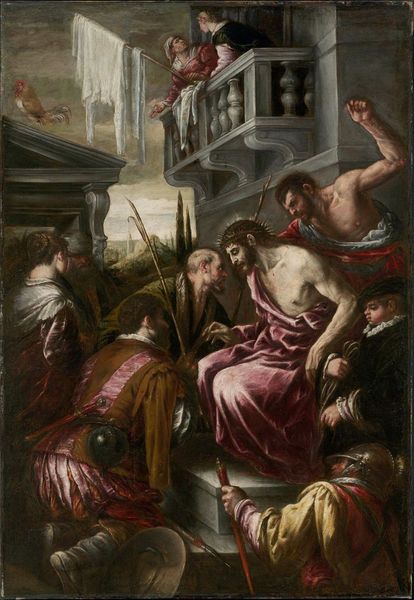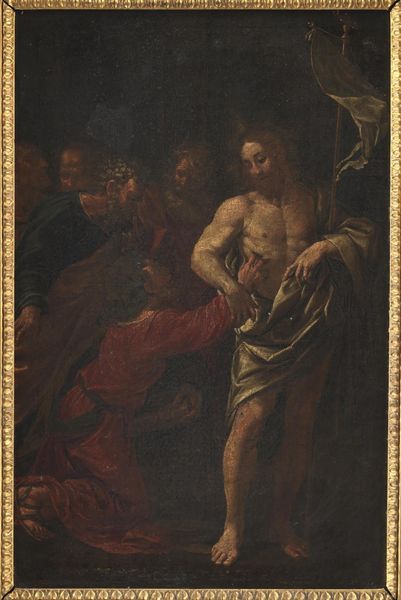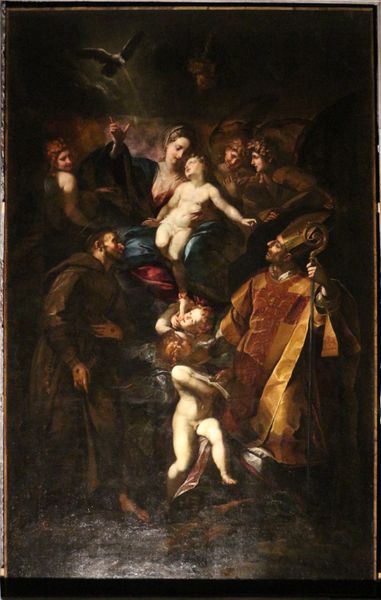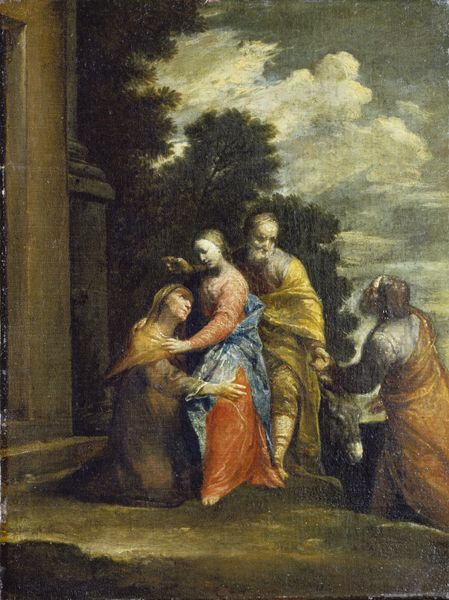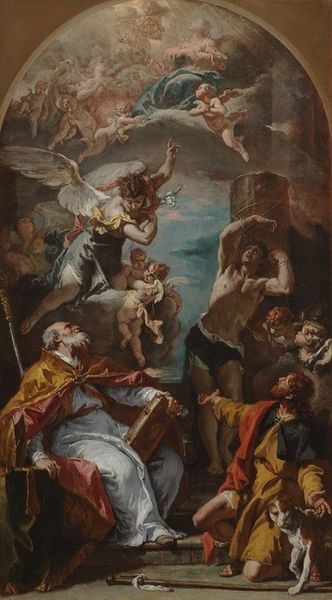
oil-paint
#
baroque
#
oil-paint
#
figuration
#
oil painting
#
flemish
#
mythology
#
history-painting
Copyright: Public domain
Peter Paul Rubens created this dramatic oil painting, *The Martyrdom of St. Catherine*, employing his signature dynamic composition. The traditional materials of oil paint on canvas here become a vehicle for intense action, which Rubens renders masterfully through swirling forms and vivid color. Rubens's process began with careful preparation. He would have primed the canvas to create a smooth surface, and then sketched out the composition using charcoal. The buildup of paint layers allows the artist to create depth and texture, with the light seemingly emanating from the figures. The velvety appearance of St. Catherine's dress, for example, is achieved through the meticulous layering of glazes. Rubens would have used a variety of brushes to achieve different effects, from the broad strokes of the background to the fine details of the figures' faces. Rubens's workshop was a hive of activity, with assistants helping to prepare materials and execute less important passages. This collaborative approach was typical of the time, and reflects the commercial nature of artistic production. His art became something akin to luxury goods, catering to a wealthy patronage system. We can see the amount of work that went into the painting; the piece is not just about aesthetics, but about the labor required for its creation.
Comments
No comments
Be the first to comment and join the conversation on the ultimate creative platform.
